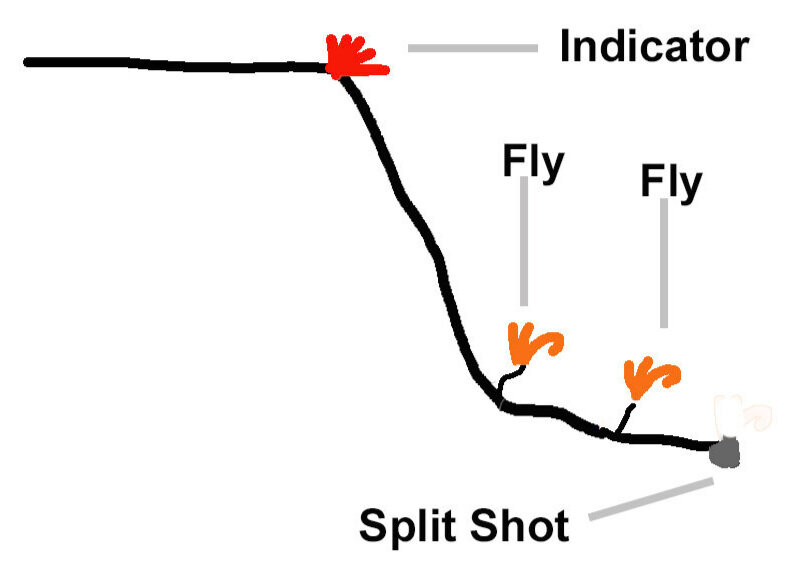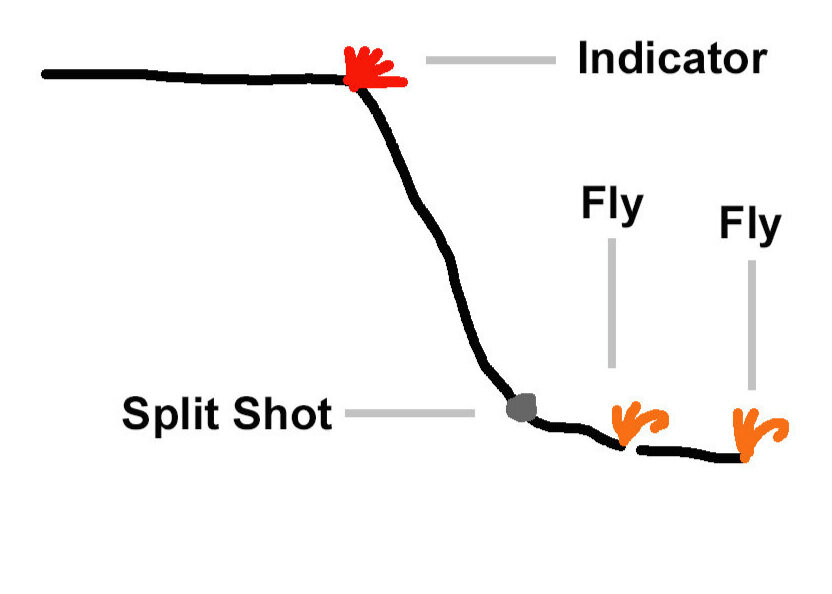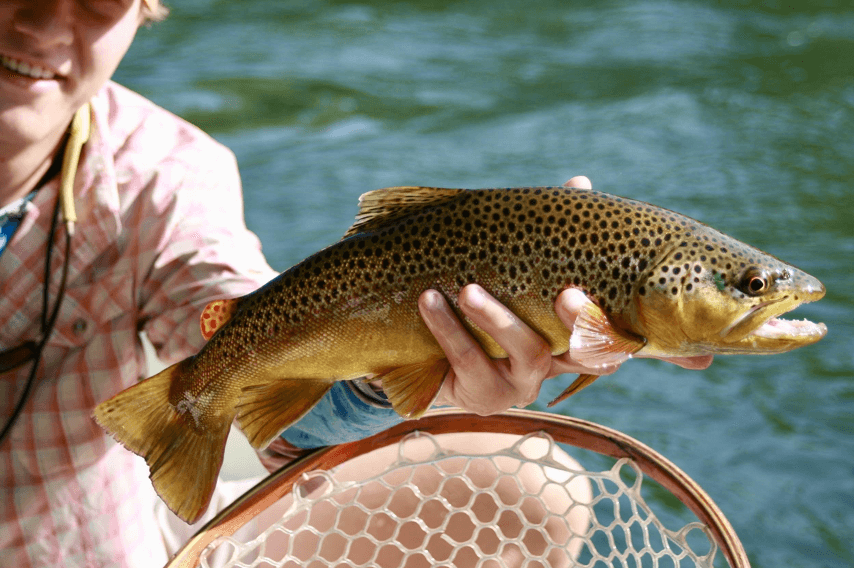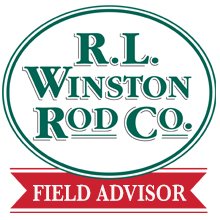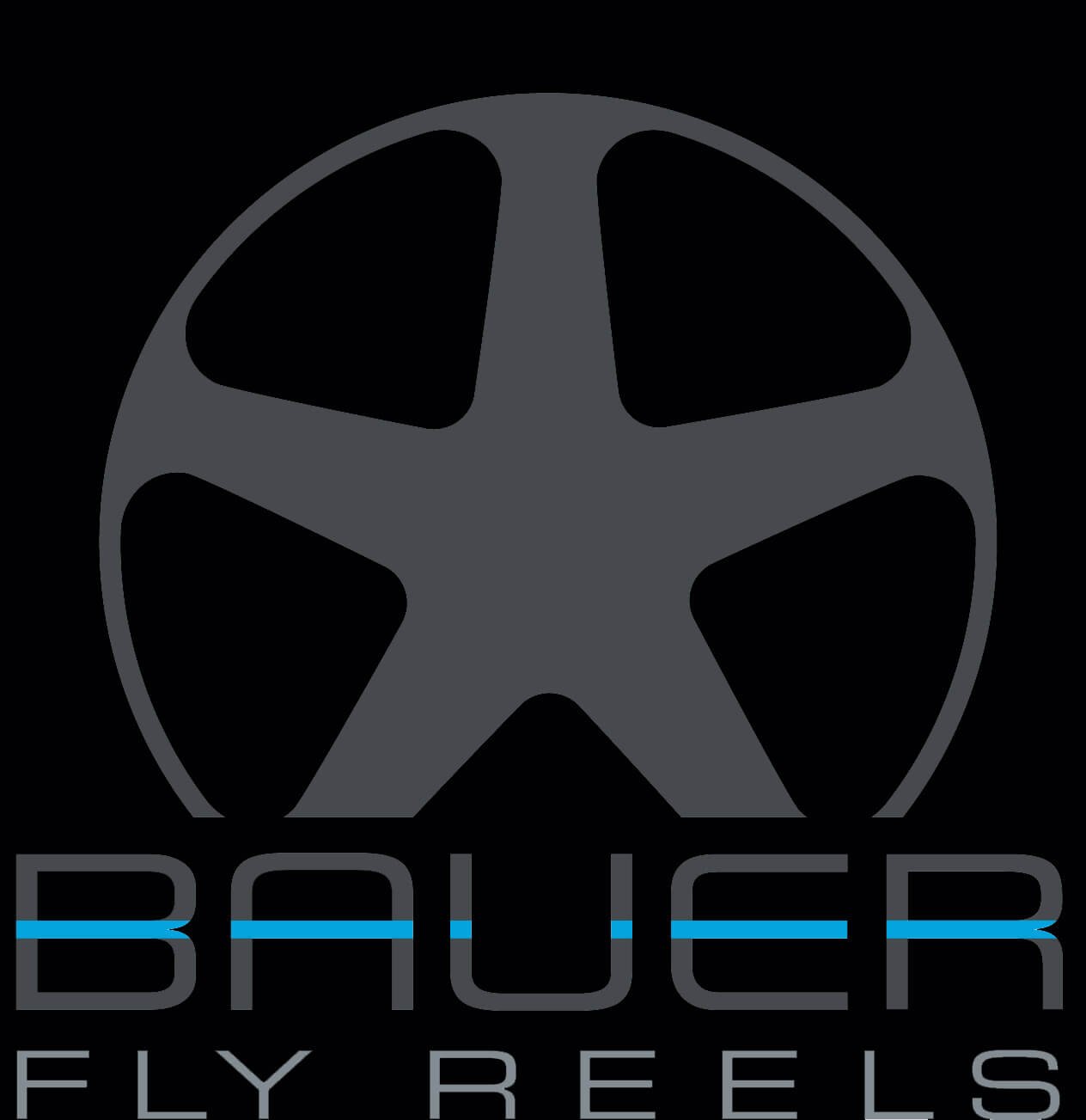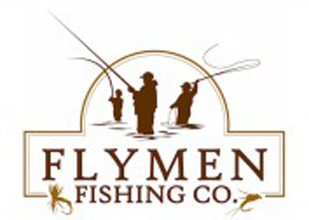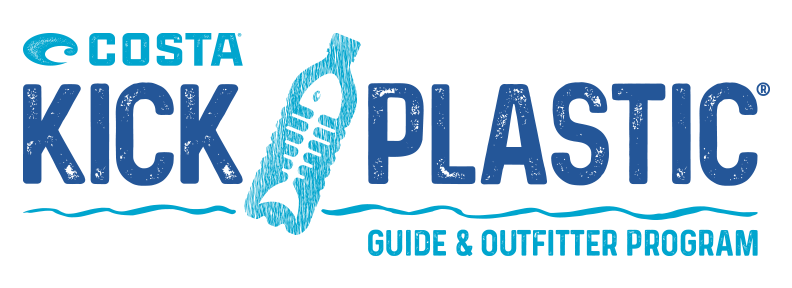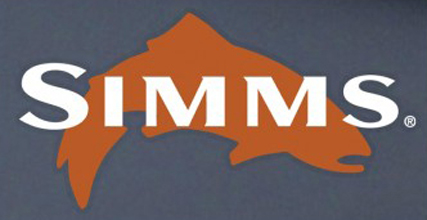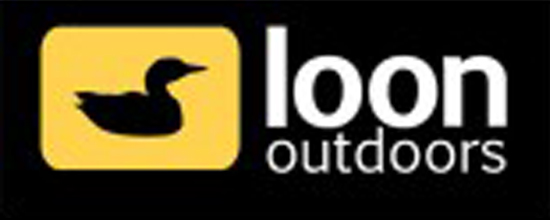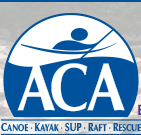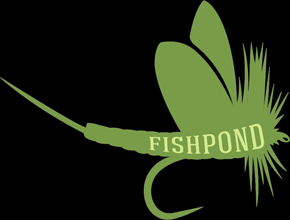UTILIZING THE POGO RIG
By Mitch Wisniewski
Spring is exploding in Asheville North Carolina right now. With that comes the emergence of our beloved spring hatches on the Watauga River and South Holston River and the fish that live there. As water temperatures rise in spring, fish begin moving higher in the water column and into riffles targeting the buffet of nymphs and emergers. Between hatches, nymphing is arguably one of the most effective ways to put fish in the net. A traditional nymph rig setup (flies under weight FIG. 2) works well in this situation by presenting our flies either suspended underneath an indicator pointing down or 90 degrees from the split shot on the river bottom. With an indicator adjustment, flies are still dangling the same way and are similarly positioned in the water column. Having another nymphing tactic to add to your all-around game is essential. The pressured trout in the East Tennessee Tailwaters have seen it all and could list the names of the guide flies whispered in parking lots before sunrise. While we all like to imagine fish or animals talking sometimes, data is what really speaks. If changing weight and flies have not produced, it is time to think about how the flies are being presented.
The “Pogo” or “Drop Shot” style leader is similar to a Euro-Nymphing or Czech-Nymphing style leader in that the weight or split shot is at the bottom of the rig with flies on tags above. Notably, two main differences between the Euro, Czech and Pogo are a pogo style leader includes a yarn indicator or bobber of some sort versus a colored section of leader acting as the indicator, and Euro or Czech nymphing are usually associated with close proximity wade fishing where the Pogo allows the angler to cast and fish greater distances. All of these leader styles allow an angler to efficiently target fish at different levels in the water column and can be adjusted to drift diverse water types including deep pools, riffle water and flat water.
Examples of a pogo style rig (Fig. 1) and a traditional nymph rig (Fig. 2)
FIG. 1
Indicator. Flies. Weight.
FIG. 2
Indicator. Weight. Flies.
TACTICS & PRESENTATION
There are two ways I fish the Pogo rig; one for heavier flies and one for light flies. I prefer to use a rig with 2 flies maximum (easier to throw, minimizes tangles and maintains sanity). The trick is to keep the weight on the bottom and adjust as needed, whether that is a fly or split shot. Similar to Euro or Czech nymphing by tight-lining with the assistance of an indicator. It breaks the rules of traditional methods, high sticking flies in close proximity to the angler. On our home trout waters the Watauga River and South Holston River, 20’ to 40’ casts are necessary most days, especially in low clear water. Utilizing the indicator allows the angler to mend slack in the line, fish further away from you or the boat and present longer drifts.
Basic nymphing principles continue to apply when it comes to adjustment and weight. Finding the right balance is key. There are a number of ways to utilize the Pogo rig. One overall factor to consider is with the weight at the bottom and the flies on tags above, the flies are presented first. The weight is one anchor and the indicator the other creating an arch in the leader subsurface. This allows the angler to swing flies in shallow water very subtly. In deep, fast water the Pogo rig allows the angler to add excessive weight in order to get flies down quickly. In this situation the weight should be ticking off the bottom making the indicator bounce a little. Be mindful of the depth you are fishing to keep tight with your flies. Take the time to adjust your indicator if needed.
Proceed with patience when casting a Pogo rig. Mo’ false casting, Mo’ problems. Traditional tight loops and hauls typically end in disaster, especially when more flies are added. A water hauling cast or shortening the length of the cast is a great place to start. Regardless of how the angler gets the rod loading and line moving, keeping loops open and embracing the “plop” a little more helps. When making a cast further away, waiting for line to fully unroll in the back cast before making a forward cast minimizes the tangles. We have we seen some tangles that are like works of art…
ONE FLY. TWO FLY
TWO FLIES WITHOUT SPLIT SHOT:
This set up is the one I use most often. Tying a larger heavy fly on the bottom and a smaller fly off the top tag. Again, this rig gives me great coverage when working water. Key here is to make sure the bottom fly is heavy enough. I take traditional fly patterns and add weight when tying. Get creative here and try utilizing different patterns as weighted point flies. Example, you could have a bouncing caddis pupa off the bottom with an emerger up top.
TWO FLIES WITH SPLIT SHOT:
Here I opted for running the split shot at the bottom while emergers swing up in the column. I found this works best with my lighter flies and soft hackles. It’s also a great leader set up when trying to be more stealth during soft hatches or figure out which emerger they’re actually eating. It can be deadly in slower flat water.
POGO FORMULA
2 FLY POGO RIG WITHOUT SPLIT SHOT
Using a 9’ 4x leader. Tie a 2’ piece of 5x tippet off the end using your preferred knot of choice.
Attach another 2’ piece of 5x on the end using a blood or surgeon's knot.
When tying your knot, keep the tag end of your 5x at least 4” long. This is where you will attach your fly.
Attach first fly to 5x knot tag
Attach the second fly to end.
Place Indicator 2-4’ from the first fly
2 FLY POGO RIG WITH SPLIT SHOT
Tie a 12” section of 5x tippet off the bottom of leader using a blood or surgeon’s knot
Attach first fly off tag end.
For second fly, repeat the two bullets above.
Tie stopper knot in end of 5x below second fly.
Add split shot 6” down from the bottom fly at stopper knot.
Place indicator 12”-24” away from top fly (adjust according to water levels).
The Pogo rig is not a one stop shop or better than any of the others. It’s simply another tool in your bag of fishing tricks. Next time you’re out on the water, give the Pogo rig a try.
Mitch Wisniewski
is a full time guide at Asheville Fly Fishing Company and a native of Morganton, North Carolina. He grew up exploring the fertile fishing mecca within Southern Appalachia and Pisgah National Forest. He spent countless days fishing with family and friends on the mountain blue lines, east Tennessee Tailwaters, lakes, and smallmouth bass rivers.
These rivers are where he started guiding and developed his skills to truly understand what it takes to be a professional guide and instructor. When it all comes together, there is nothing more exciting and rewarding. Mitch started guiding fishing charters professionally in 2013 and has worked with top name lodges from the Carolinas to Alaska. He pursued a degree in Marketing from Penn State and earned a degree in Outdoor Leadership from Warren Wilson College. Mitch is on pro-staff for Flymen Fishing Company, rows a drift boat and raft and specializes in trout, smallmouth and carp. He is River Rescue 3 International & ACA Level 4 Swiftwater Rescue certified and CPR/First Aid certified. Click here to view Mitch’s guided trip photos.
Request Mitch as your guide in the comments box at the bottom of the reservation form.


